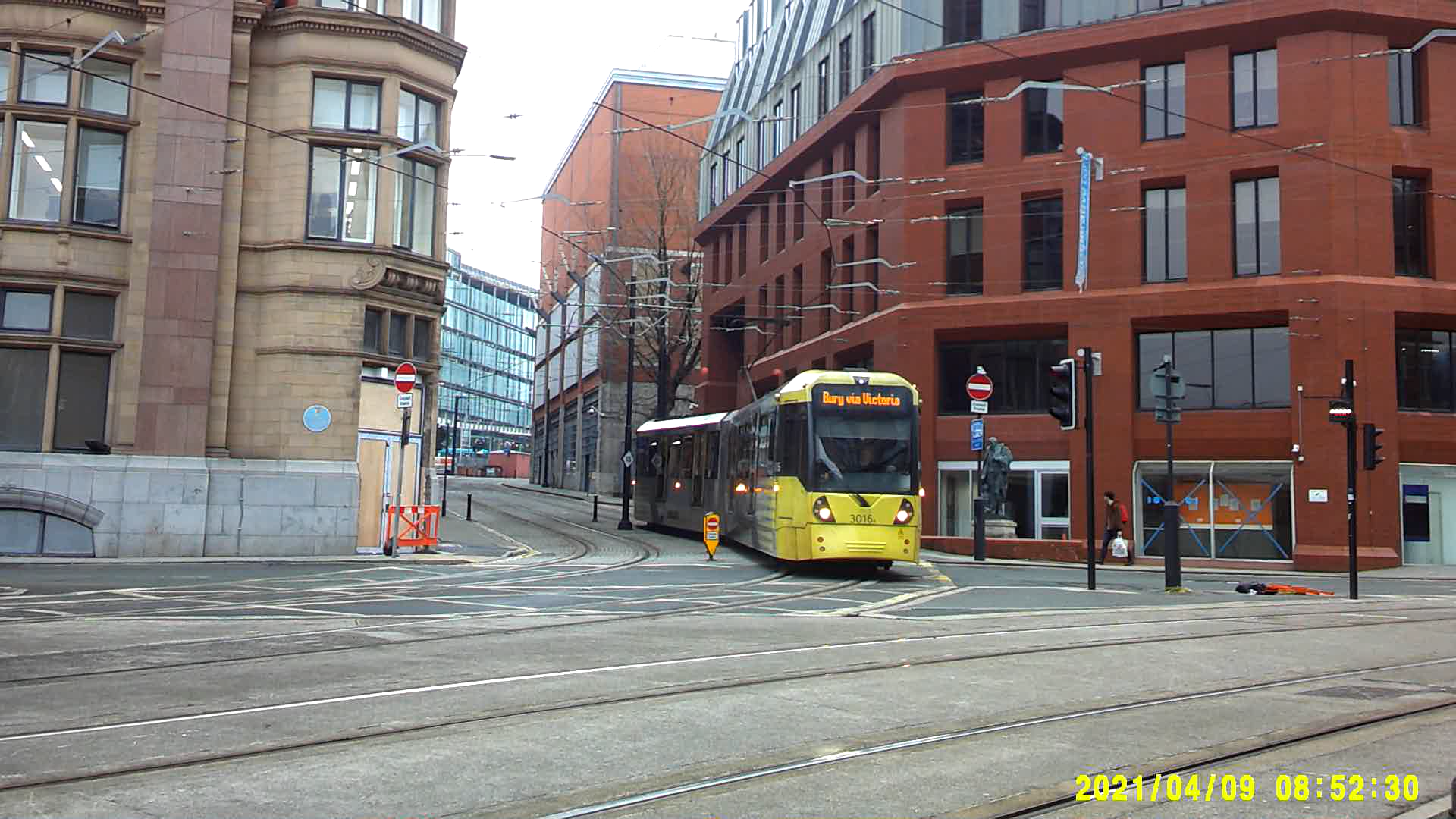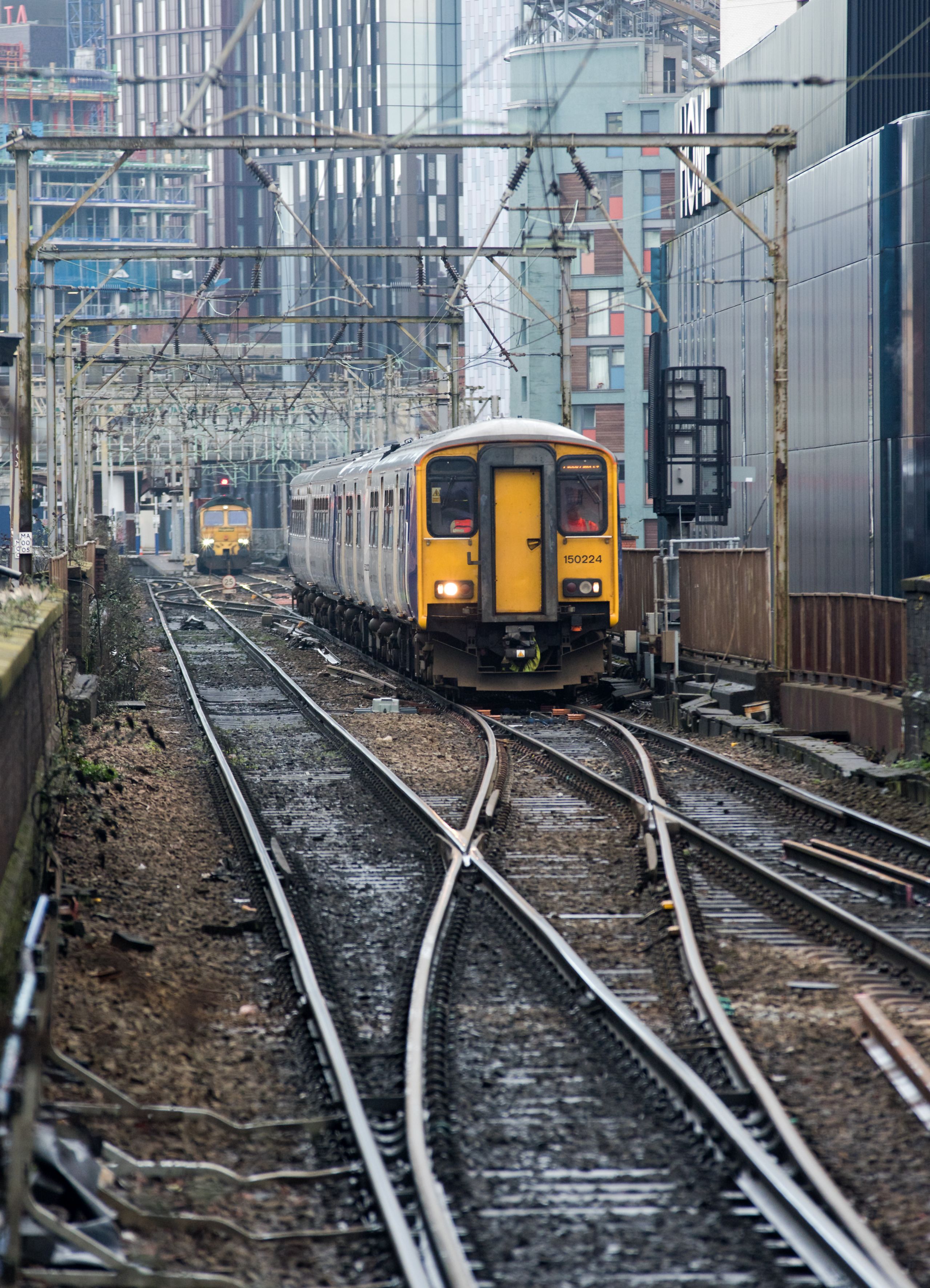BEHIND THE BATTLE LINES: THE WAR AGAINST HS2
By Dolly Busby

A bloody battle rages daily on the banks of the A51.
The A-road runs for 85 miles from Chester to North Warwickshire. Not the most interesting stretch of road but be warned, it can be busy.
So busy, in fact, the conflict goes largely unnoticed.
A cluster of trees - unofficially christened Bluebell Wood by its occupiers - is the anti-HS2 stronghold. Impenetrable, even by a nosey journalist.
The occupants are highly private and wary of outsiders - they've been betrayed one too many times.
A couple hundred metres further on, towards the round-a-bout, is the battleground.
HS2 has set up camp, and it's here to stay. White tents stand firm and orange diggers scuttle over mounds of up-turned earth.
For nine months, every day, the occupants of Bluebell Protection Camp rise and prepare for war.
Armed with banners and megaphones, the protestors know their rights and they're not backing down.
The ‘Gate Block’ ritual consists of marching down to the entrance of the construction site at the first light and preventing HS2 workers from entering their own camp.
Some days it only takes 10 minutes for police to gallop up and demand the protestors retire.
So begins the ritual of the antis reading their rights, the police threatening arrest and the eventual cease-fire with everyone retreating home in time for breakfast.
The battle may be over, but the war continues.
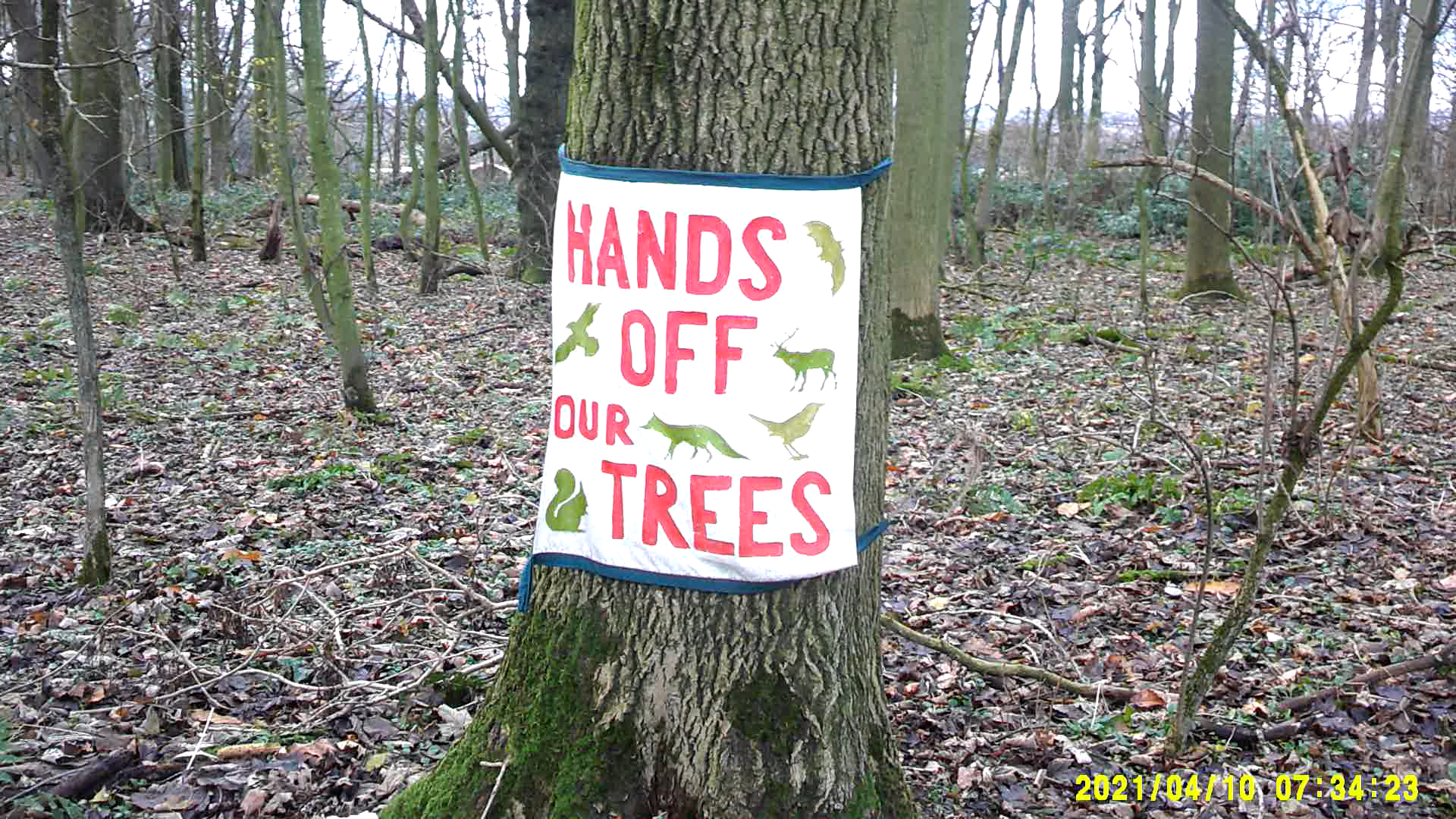
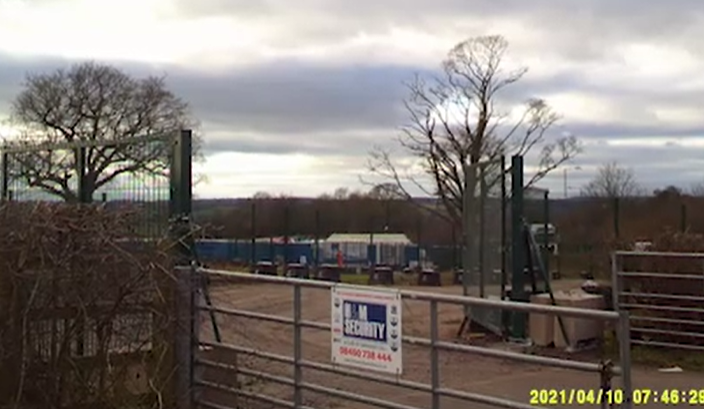
A brief background on HS2
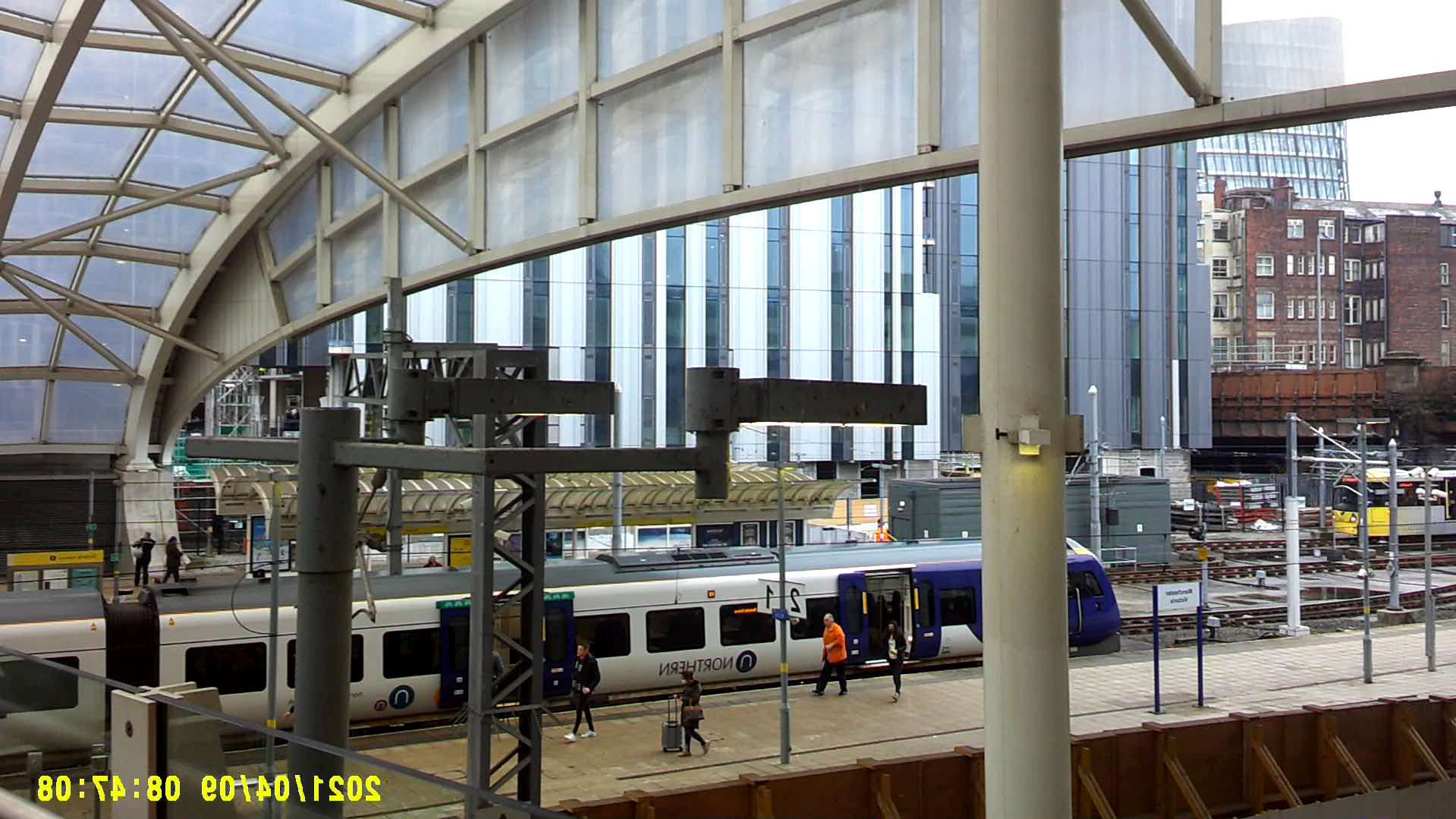
HS2 has been chugging along a slow track to completion since 2009.
HS2 (High Speed Railway 2) was proposed under the labour government led by Lord Adonis as Minister for Transport.
Expected to cut journey times from one hour 21 minutes to 52 minutes, HS2 was to connect England's major cities including; London, Birmingham, Manchester and Leeds.
Given the green light in 2012 HS2's original budget was estimated at £33bilion.
The original route is displayed in the interactive map below:
However, over time HS2's budget continued to rise.
In 2019 the estimated costs came up to between £72 and £92 billion - more than double of its original cost.
Here is a graph showing the estimated expenditure on HS2 between 2010 and 2021.
November 2021, the Conservative party under Boris Johnson announced the cancellation of HS2's eastern leg - the track running between Birmingham and Leeds.
On the interactive map below, the black line is the eastern leg. Plans for this line of HS2 have been scrapped by the government in a bid to save money.
The announcement was met with outcries from political leaders such as Manchester's Andy Burnham declaring: "These decisions are fundamental to the future of North of England's economy."
Keir Starmer, leader of the Labour party condemned the move as a "betrayal of the North" as shown in the Tweet below.
"The north of England has been betrayed!"
— LBC News (@LBCNews) November 18, 2021
Sir Keir Starmer says 'you can't believe a word the Prime Minister says' after it was announced the Leeds leg of HS2 has been scrapped.
Read more: https://t.co/CkSzmbP4ey pic.twitter.com/3VRDiw1s0h
Grant Shapps further introduced the alternative IRP (Integrated Rail Plan) a £96bn investment package cutting journey times between Northern towns and cities and increasing the capacity of the rail network, Shapps said.
See the map below for the government's new IRP proposal.
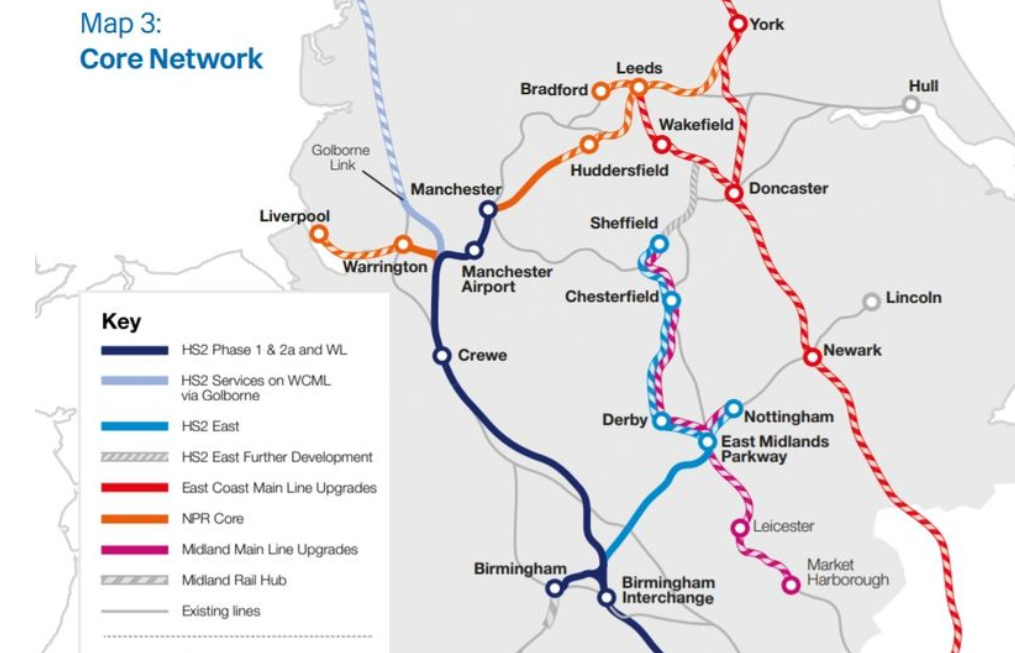
For several weeks, politicians rallied backwards and forwards using the developments of HS2 as a political battering ram.
The opposition claimed it went against the Conservative's 'Levelling Up' agenda in the North of England, while the Conservative's themselves insisted on the benefits of the IRP.
But what did people really think?
When considering the shifts in HS2's proposed structure and how this will effect England, it is important we hear from those who are not usually heard.
Mancunian Matters spoke to protestors, home owners and rail experts on what these changes really meant for the general public, and was HS2 really benefitting England?

The Environmental Frontier

Back in the protest camp, Bluebelle Wood, the protestors discuss tactics.
Delay, delay, delay. Even just preventing one HS2 employee from getting to work on time is a small victory. To them, it all adds up.
Which is why they will return to the 'Gate Block' tomorrow. And the next day. The campaigners regroup at their makeshift-but-intricately fortified base - to prepare their next move.
Among them was a Ghetty Images photographer, an outsider, allowed access only to document. He acted as the go-between.
Sleepless nights with his feet on the dashboard of his navy blue 4x4, dirty coat zipped up to his chin - by now, he was no stranger to the sacrifices of a campaigner.
'It's not easy,' he says. 'These people really care. They must do, to sacrifice any chance of a normal life.'
Sipping on a tin cup of ice-cold coffee, he continues: 'People have a misconception, you know, they're not dodging society or responsibility. They fight for a cause, for a better future. I haven't been able to see my daughter for two months - their separation from normality has been much longer.'
The photographer explains, some are environmentalists, some are losing their houses and others are anarchists - those who live in the belief that people's actions should never be forced by other people.
A young girl, spending her gap year protesting HS2, proudly introduced herself as the camp's gardener as she knelt to tend to her onions.
She said: 'There's no hierarchy at the camp. People come and go however they want. Everyone has their own story and purpose here.'
She explained the number of residents constantly changed but there were the firm few that drove the cause.
It was easy to guess who - the ones that lived on the edge of the woods in mossy caravans - protecting the army.
These were the ones who had been present at Wendover - a battle that made them legends of the cause. They know the law back-to-front and are not to be challenged.
The photographer explains, 'These guys have stamina. Many people who were present at Wendover left, exhausted and downbeat.'
October 2021, bulldozers arrived to flatten the Wendover resistance camp in Buckinghamshire. But five activists delayed them by tunnelling deep into the earth. Two, known as 'Swampy' and 'Satchel' stayed for 35 days.
Whisperings of the name 'Swampy' shiver through the trees at Bluebelle Woods but he is not actually present - only a figurative figurehead.
'Swampy' wasn't the only thing muttered between the camp-mates - something was coming to a-head but quite what, was classified knowledge.
Since the obliteration of Wendover protestors have become withdrawn and suspicious of outsiders.
It is hard work trying to penetrate the first line of caravans and into the core of the woods, where in lies the camp’s base.
Two resolute rules accompany access into this highly private area – no interviewing, no identification.
A huge and sturdy treehouse crouches in among the tress - home to the anti-HS2 foot-soldiers.
It proves resilient shelter from the bitter nights, a place to sing songs around the wood burner or grab a book from the library.
Campmate Red (not his real name) was once an architect.
Leading the rest of the troops, Red hangs off the side of the tree house, hammering in sheets of plywood or scales up trees to build smaller structures.
‘The bigger the structure – the more it will delay them,’ Red says.
'I have hope we will stop it.' Red says, 'I’ve got a good feeling. Since the eastern leg has fallen, I strongly believe so will the western.’
‘How can it not?’ Red shakes his head, ‘Their whole business model is screwed.’
Red then turns around and returns to his work – the job is never done.
Threat of eviction is in the forefront of everyone's mind. It's inevitable. All they can do is delay. Delay and wait in the cold.

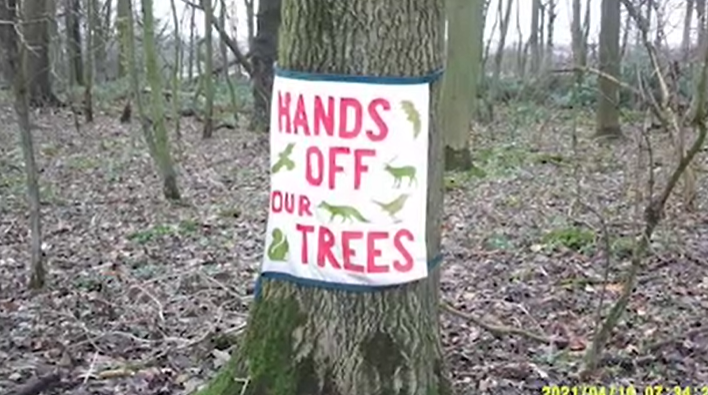
The victims

Originally from South Cheshire, at 58, Janet moved to Warburton in 2009 to be closer to her daughter.
On the left is the map of HS2's route into Manchester coming in from Crewe. Janet's house was on this line.
Janet lived there for 10 years before a divorce and the announcement of HS2 turned her life upside down.
HS2’s proposed route cuts diagonally through the middle of Warburton and a stone's throw from Janet's house - a semi-detached house surrounded by fields and livestock.
Every morning Janet would wake up, look out her window and see the brand new track of HS2.
Janet shakes her head, 'Criminal'.

The divorce forced Janet into selling her house, but HS2's proposed route was making it impossible to do so.
After getting through five different estate agents, Janet applied for Government's the 'Need to Sell' scheme.
The scheme applies to residents who have a 'compelling reason' to sell their house but cannot as a direct result of the announcement of HS2.
Eligibility requires evidence the applicants meet the following criteria:
Property type: You’ll need to show that the property is owner occupied, you’re the personal representative, or you’re acting as a ‘reluctant landlord’ who has had to rent out the property as a result of HS2.
Location: your property is close enough to the route that it’s likely to be substantially affected by HS2’s construction or operation. There is no fixed distance.
Effort to sell: You’ve tried to sell the property without success for at least three months.
No prior knowledge: you have bought or signed the lease before the publication of HS2.
Compelling reason to sell: give evidence of a compelling reason to sell your property now, or you would be placed under an unreasonable burden if you were unable to sell your property in the next 3 years.
If the application is successful, the government will buy your property for 100% of the original market value.
The government will not cover additional costs such as legal fees.
For two and a half years Janet fought for her application to succeed under the scheme. Three or four times her papers bounced back asking for more information.
Janet believes it was deliberate to wear her out so the government could avoid paying her out - there is no proof to this statement.
However, only 40% of applicants under the NTS are successful.
'It was so intrusive and so personal,' Janet says about the application which asked for bank statements. 'And I just thought, why should I tell them every penny I have when it's them who's devaluing my house.'
Under a time constraint, Janet had to sell her house for £200,000 less than the original price.
'We weren't consulted,' says Janet 'and we definitely weren't fairly compensated because our house was outside of compulsory purchase.'
Compulsory purchase means the government can obtain land or property that they need to build Phase 2a of the railway between the West Midlands and Crewe.
Below is an infographic explaining the government's compensation scheme for compulsory purchase and compensation rights.
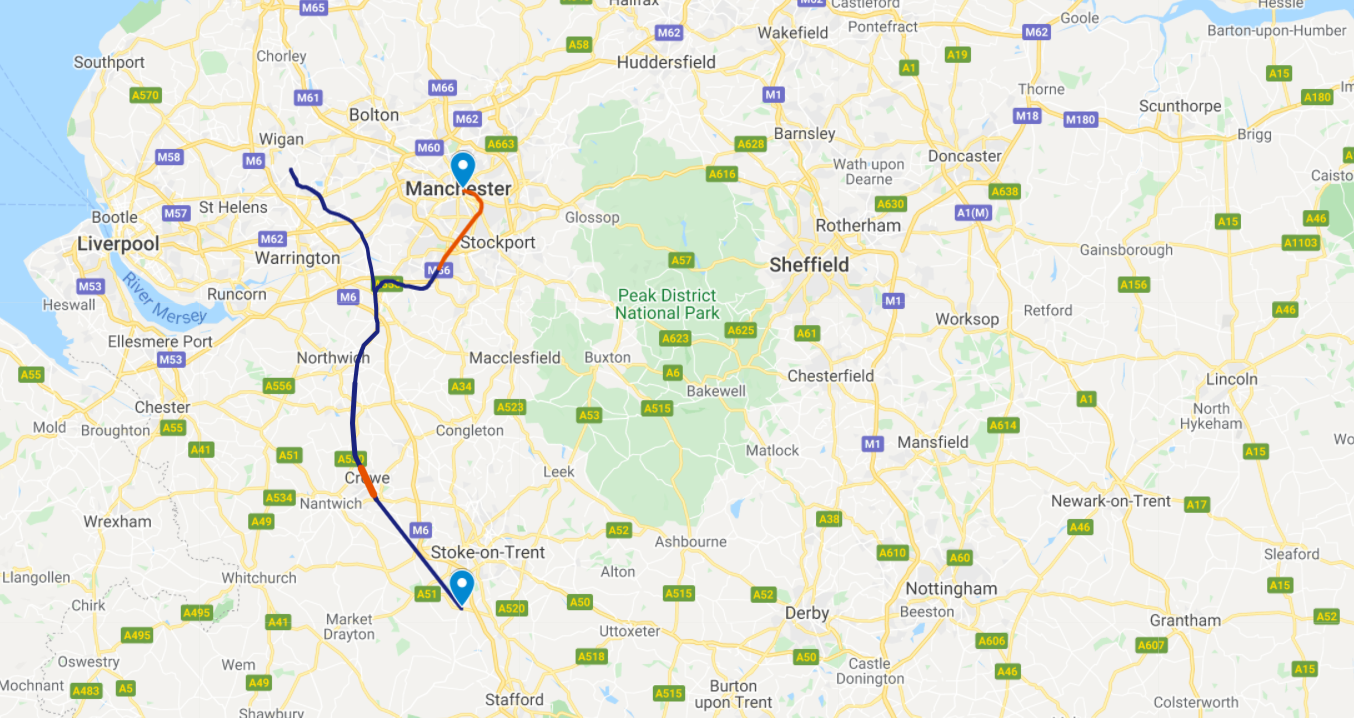
The Experts
Professor Paul Salveson and Tony Miles
Photo by: Tony Miles
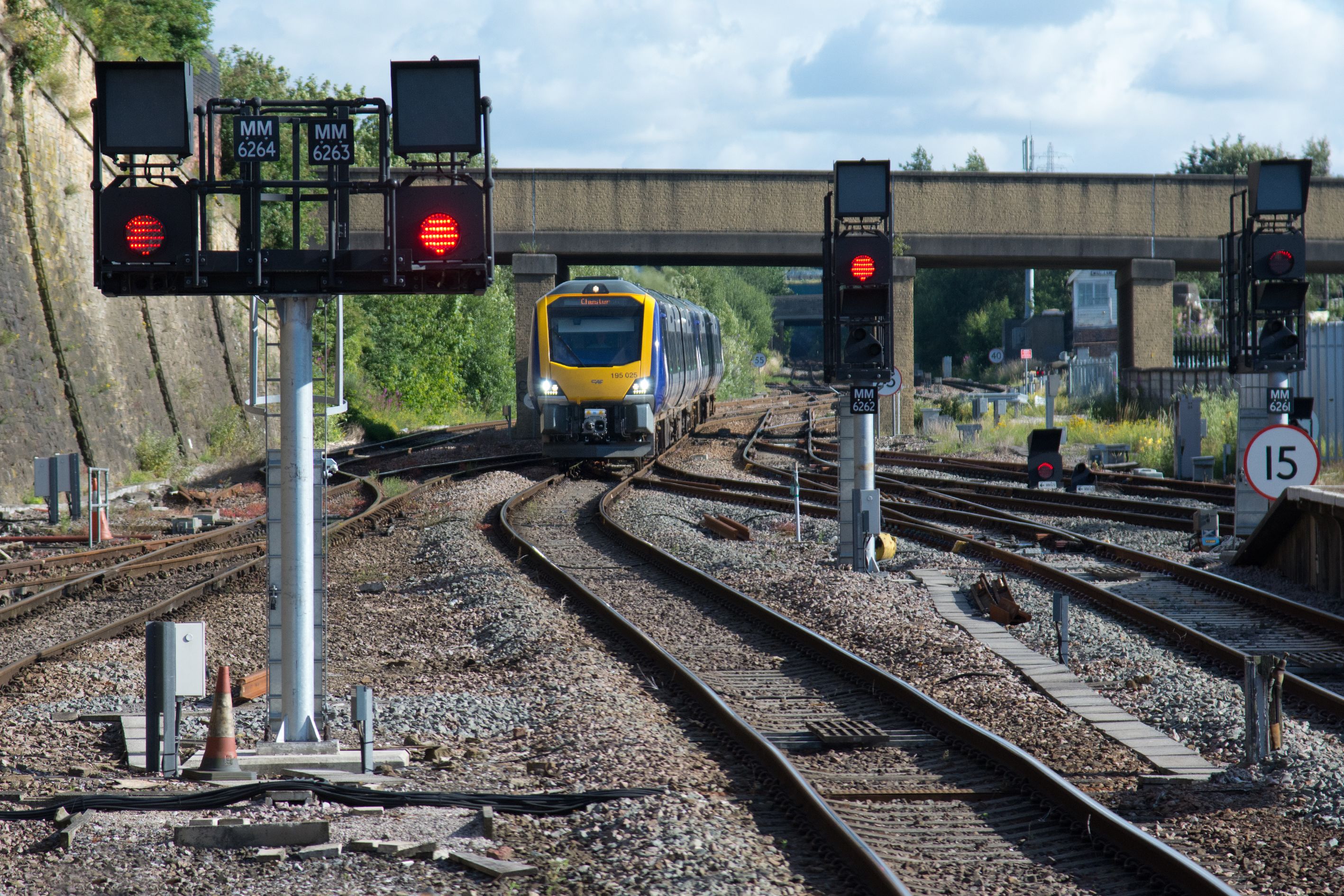
Professor Paul Salveson
Tony Miles - Rail Journalist
Paul Salveson is a railway expert.
A visiting Professor at the University of Bolton and Huddersfield, Paul was awarded an MBE for services to the rail industry in 2008.
Paul is anti-HS2, confident that what the North need more than anything, is improvement to its existing railways.
Threat of rail delays, disruptions and cancellations are a daily stress for northern commuters.
All feel the strain of a Victorian infrastructure crumbling under 21st Century demands.
Below is a table revealing the overall number of trains scheduled, book, delayed or cancelled in the last year.
The far left column shows in British pounds how much money was returned in compensation for these disruptions.
Paul explains the Castlefield Corridor, a bottleneck rail line between Castlefield junction and Fairfield Street junction in Greater Manchester, must be updated.
The Corridor is a congestion hotspot and in dire need of investment.
Paul says while a major rail route in Manchester remains neglected, there is no justification for HS2.
Tony Miller is a rail journalist and Paul’s HS2 sparring partner.
Contributing to rail publications from the age of 16, Tony presents a compelling pro-HS2 argument.
Freight capacity is Tony’s main angle. Getting passenger trains off the rail lines will clear more room for freight in the North.
In 2009 the Department for Transport described an increase of more than ten years of 50% in rail passenger traffic and an increase of 40% in freight resulting in several infrastructure problems.
Freight and passenger trains were struggling to operate on the same line.
Everything was getting too slow and crowded.
Enter in HS2’s business model.
(Second background photo credit: Tony Miles, The Castlefield Corridor)
